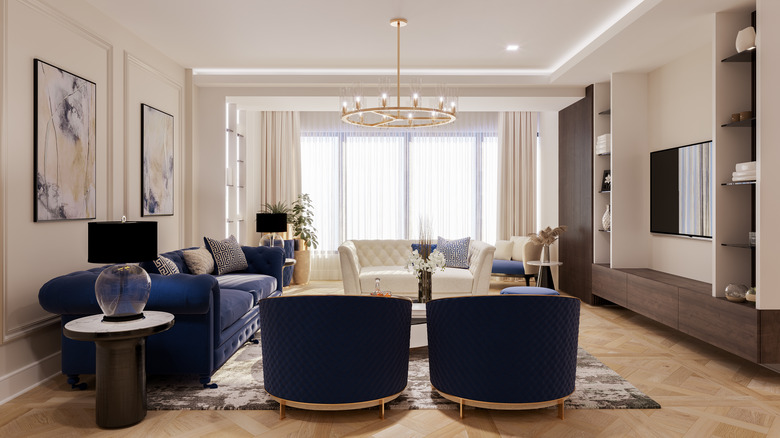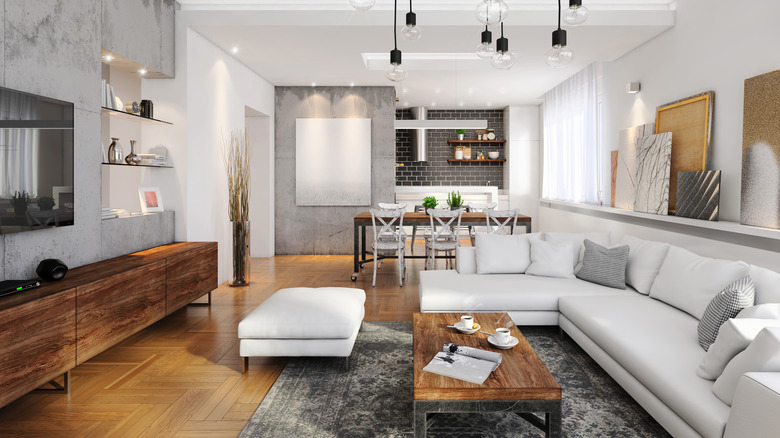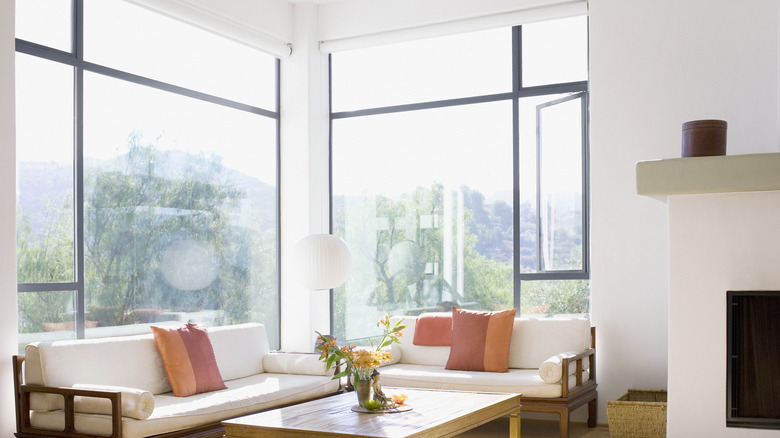Bobby Berk Says These 3 Types Of Lighting Are Essential In The Living Room
If there is one detail that is often overlooked when designing a living room, it's lighting. For most homeowners, choosing a paint color and getting the furniture layout right is among the most important aspects. But interior designers will always stress how important lighting is when designing this space. If done well, it can add dimension to the room, influence the mood, and create focal points. With lighting, you can highlight features like tall ceilings or illuminate different spots for activities and relaxation. To get it right, experts agree that one type of light fixture isn't enough.
Interior designer Bobby Berk from Netflix's "Queer Eye" is a firm believer in having multiple lighting sources in a living room. "I like to have three different types of lighting," Berk told Homes & Gardens. There are three layers that create an interesting and open room; accent, ambient, and task lighting. Berk explains what this can look like in your space.
Layer your lighting
Bobby Berk usually adds three layers of lighting to every room he designs, including the living room. "They typically will consist of 'overhead lighting,' which will come from the overhead fixtures you have, 'diffused lighting,' which can come in through a fabric lampshade or opaque glass shade, and 'task lighting,' which will come from directional lamps or task lights," Berk explained to Homes & Gardens. Having your lighting in layers provides aesthetic and practical uses.
Overhead lighting helps illuminate the entire room, diffused lighting can set the mood, and task lighting is best for focusing on activities like reading. It's also important to note each type of lighting will vary in importance depending on the room. In the kitchen, overhead and task lighting may be more important as you're trying to prepare a meal. However, in a living room, where setting a cozy mood to relax may be the goal, diffused accent lighting may be the priority.
Make the eyes dance
Lighting is also a great way to draw the eye to different aspects of the living room. For example, uplighting or wall sconces can draw your attention toward the ceiling, making them appear taller and more open. Spotlights and picture lights can also highlight the art or architectural features in the room. The variety of light sources overall makes a space more visually interesting. As you're creating a lighting plan, you should also consider the temperature. Warmer lights are yellow-tinted and often better for creating cozier spaces meant for relaxing. While cool light tones, which have white or even blueish-white tints, are better for areas where you're focusing on tasks, such as doing homework on a desk.
While using different types of fixtures is essential, Bobby Berk emphasizes the importance of natural light. "Open your blinds or draperies to let natural light in during the day," Berk wrote on his website." ... If you don't have great natural light in your space, add some mirrors to help reflect and bounce light." The different layers of light, along with natural sunlight, will ensure your living room is perfectly lit no matter how you use the space.


